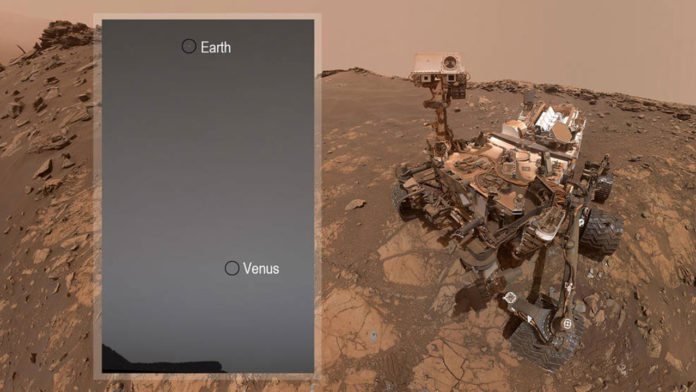While stargazing on Mars, Curiosity rover spots Earth and Venus.
Curiosity aimed its Mast Camera, or Mastcam, at the sky around 75 minutes after sunset on June 5, 2020, the 2,784th Martian day, or sol, of the mission. A two-image twilight panorama uncovers Earth in one frame and Venus in the other. Both planets appear as minor pinpoints of light, attributable to a combination of distance and dust in the air; they would regularly look like bright stars.
The brief photo session was partly to check the twilight brightness: During this season on Mars, there’s more dust in the air to reflect sunlight, making it especially bright.
Mastcam co-investigator Mark Lemmon of the Space Science Institute in Boulder, Colorado, said, “Even moderately bright stars were not visible when this image of Venus was taken. Earth also has bright twilights after some large volcanic eruptions.”
At the bottom of the new images is the top of a rock feature called Tower Butte in the “clay-bearing unit,” which Curiosity has been exploring for more than a year. Since landing in 2012, the rover has captured blue Martian sunsets and passing asteroids as well as Mercury and Mars’ two moons, Phobos and Deimos, transiting across the Sun.
